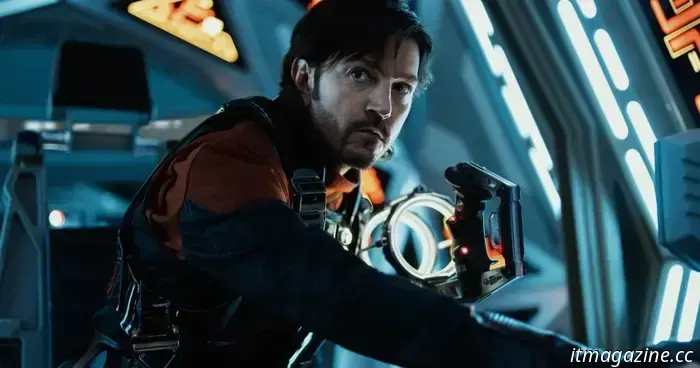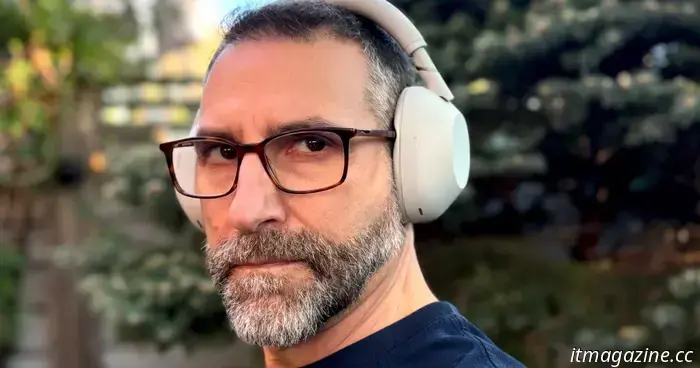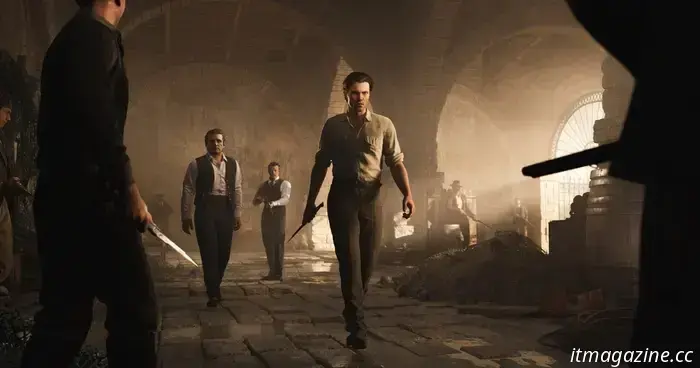
Andor: How the Disney+ series showcases the adaptability of Star Wars
Director Gareth Edwards’ Rogue One: A Star Wars Story quickly established itself as the standout Star Wars film of the Disney era. However, it was unexpected that writer Tony Gilroy would also transform Rogue One into a foundation for Andor, one of the best live-action productions within the Star Wars franchise. With the conclusion of Andor season 2 and the journey of Diego Luna’s tragic character, Cassian, wrapped up, the series has reinforced the creative versatility of the galaxy far, far away.
Andor’s realistic approach is undoubtedly distinct from the franchise’s more grandiose sci-fi narratives. While some Disney+ Star Wars fans who favor the franchise’s more fantastical elements may not connect with its grit and realism, it remains a triumph for the franchise as a whole. Regardless of whether it leans toward realism or the mystical, Andor demonstrates over two seasons how the franchise can celebrate diverse sci-fi subgenres without losing its essence or relying on prominent legacy names for appeal.
Revitalizing familiar Star Wars themes
On a surface level, Andor doesn’t provide groundbreaking content regarding its position in the expansive Star Wars timeline. Millions of fans recognize the timeline surrounding the Rebellion. This era has been widely explored in the main films and in various supplementary media.
Nevertheless, with a comprehensive narrative told over two seasons, Andor refreshes this classic era in Star Wars mythos by introducing new (or infrequently explored) live-action perspectives. By bringing the story down to the grassroots level and distancing it from the Skywalker legacy, Andor highlights the efforts involved in forming the Rebel Alliance. This approach evokes a renewed sense of appreciation for this era, making the established outcomes of the Skywalker Saga resonate powerfully once again.
Much of this success stems from the compelling performance of Andor’s lead and the way the supporting cast enhances his story. Luna brings depth to a character that has existed for less than a decade and has only appeared in one other live-action project, making him as nuanced as many classic Star Wars figures. The Rebel agent’s tired, cynical, and battle-hardened persona resonates genuinely with the audience in a grounded manner seldom depicted in live-action Star Wars. This makes his sacrifices and losses throughout Andor, along with his heroic end in Rogue One, feel all the more impactful. He relinquished any hope for companionship and the peaceful life he and many others deserved.
A nuanced supporting cast
Beyond the reluctant hero of the Disney+ series, Gilroy and his team deserve credit for developing the main ensemble. Notably, Genevieve O’Reilly’s Mon Mothma stands out. With just a few seconds of screen time in her initial appearance in Star Wars: Return of the Jedi, she has evolved into a significant figure in both seasons of Andor. Few supporting characters from the original trilogy have been developed with such care in Disney's live-action adaptations. She acts as a pivotal force in Andor’s political thriller storylines, paralleling Cassian’s espionage missions. The environment within the Senate, filled with Empire-imposed restrictions, adds a claustrophobic tension as Mon and her allies navigate their struggles.
This level of meticulous attention is evident among its rich characters, whether it’s Stellan Skarsgård’s Luthen Rael or Adria Arjona’s Bix Caleen. Luthen is portrayed as a staunch fighter against Imperial oppression, but his cold, efficient perspective on his agents suggests a darker, almost psychotic edge. This aspect beautifully complements Saw Gerrera’s (Forest Whitaker) remark that “revolution is not for the sane.”
Meanwhile, Bix’s challenging journey as a rebel and survivor grants her character a much-needed sense of agency, contrary to many other Hollywood blockbuster productions that might have reduced her role to merely being a love interest. Her resilience and fight for independence remain consistent throughout her storyline, particularly when they conflict with Cassian’s soldier-like paranoia.
Additionally, characters like Denise Gough’s Dedra Meero and Kyle Soller’s Syril Karn are far more complex than standard antagonists. This Imperial duo embodies the disturbing consequences of authoritarian indoctrination while still revealing traces of humanity. From Syril’s awakening to the realization of his role in the horrors inflicted on others to Dedra’s struggle to feel genuine grief over his actions in the Ghorman genocide, sympathy exists amidst these ultimately fascistic foes.
Andor as a catalyst for the Star Wars franchise
As the franchise continues to navigate its next significant era in theaters, part of Andor’s acclaim can be attributed to its sobering portrayal of rebellion and its key figures. While it may seem reductive and patronizing to label it as “Star Wars for adults,” it does present the Empire’s malevolence in a distinctly sinister way. Star Wars media has documented numerous crimes against democracy and humanity committed by Imperials. However, by opting for a more realistic and intimate narrative style, the horrors of authoritarianism feel



Other articles
 Sony's WH-1000XM6 makes its entrance featuring improved ANC, a folding hinge, and a raised price point.
Sony's latest noise-canceling headphones are now officially available, featuring a number of appealing enhancements.
Sony's WH-1000XM6 makes its entrance featuring improved ANC, a folding hinge, and a raised price point.
Sony's latest noise-canceling headphones are now officially available, featuring a number of appealing enhancements.
 I have spent 48 hours using Sony's WH-1000XM6, and I really don’t want to return them.
Sony's latest flagship wireless headphones improve upon nearly every aspect.
I have spent 48 hours using Sony's WH-1000XM6, and I really don’t want to return them.
Sony's latest flagship wireless headphones improve upon nearly every aspect.
 The prequel to Game of Thrones, titled A Knight of the Seven Kingdoms, has been postponed until 2026.
Will there be two Game of Thrones series in 2026?
The prequel to Game of Thrones, titled A Knight of the Seven Kingdoms, has been postponed until 2026.
Will there be two Game of Thrones series in 2026?
 NYT Strands today: clues, spangram, and solutions for Thursday, May 15.
NYT Strands today: clues, spangram, and solutions for Thursday, May 15.
 No owners are receiving new features in a free update.
Enhance your Nothing Phone 2 with updated features and improved privacy! Look for updates and benefit from a more seamless and secure experience.
No owners are receiving new features in a free update.
Enhance your Nothing Phone 2 with updated features and improved privacy! Look for updates and benefit from a more seamless and secure experience.
 Mafia: The Old Country drew inspiration from The Godfather and Sicilian knife duels.
We talked with the developers of Mafia: The Old Country at PAX East, who shared insights about the longstanding tradition of Sicilian knife fighting.
Mafia: The Old Country drew inspiration from The Godfather and Sicilian knife duels.
We talked with the developers of Mafia: The Old Country at PAX East, who shared insights about the longstanding tradition of Sicilian knife fighting.
Andor: How the Disney+ series showcases the adaptability of Star Wars
Andor season 2 exemplifies a success for Star Wars, showcasing how the franchise can thrive by exploring sci-fi subgenres and diverse narrative perspectives.
